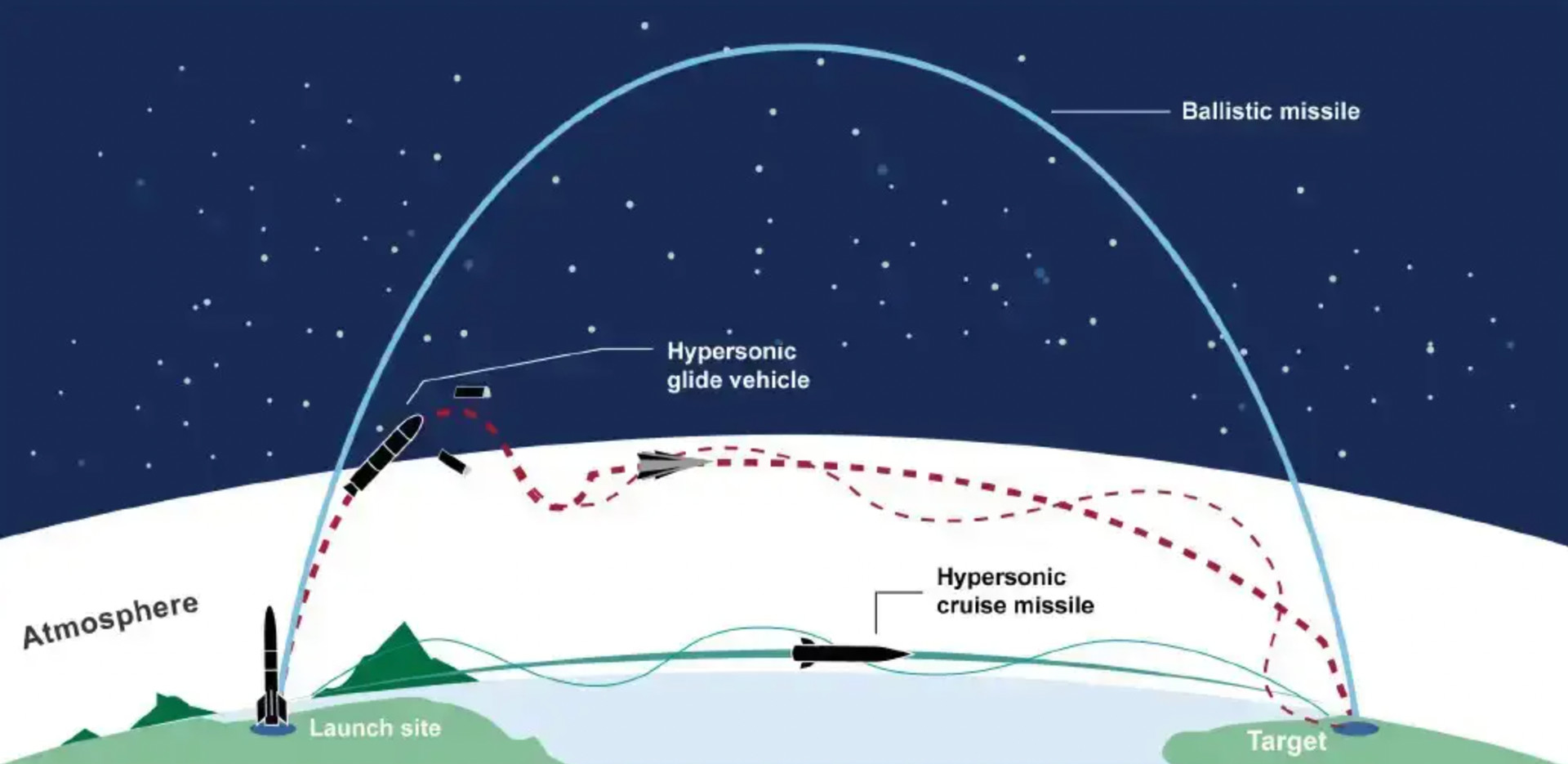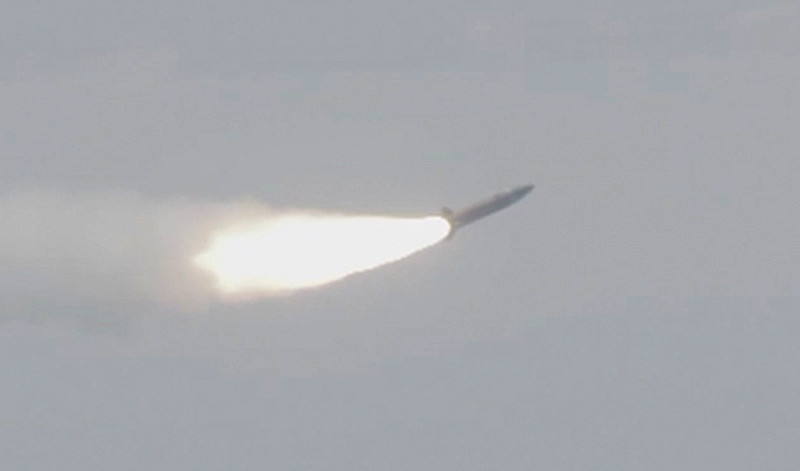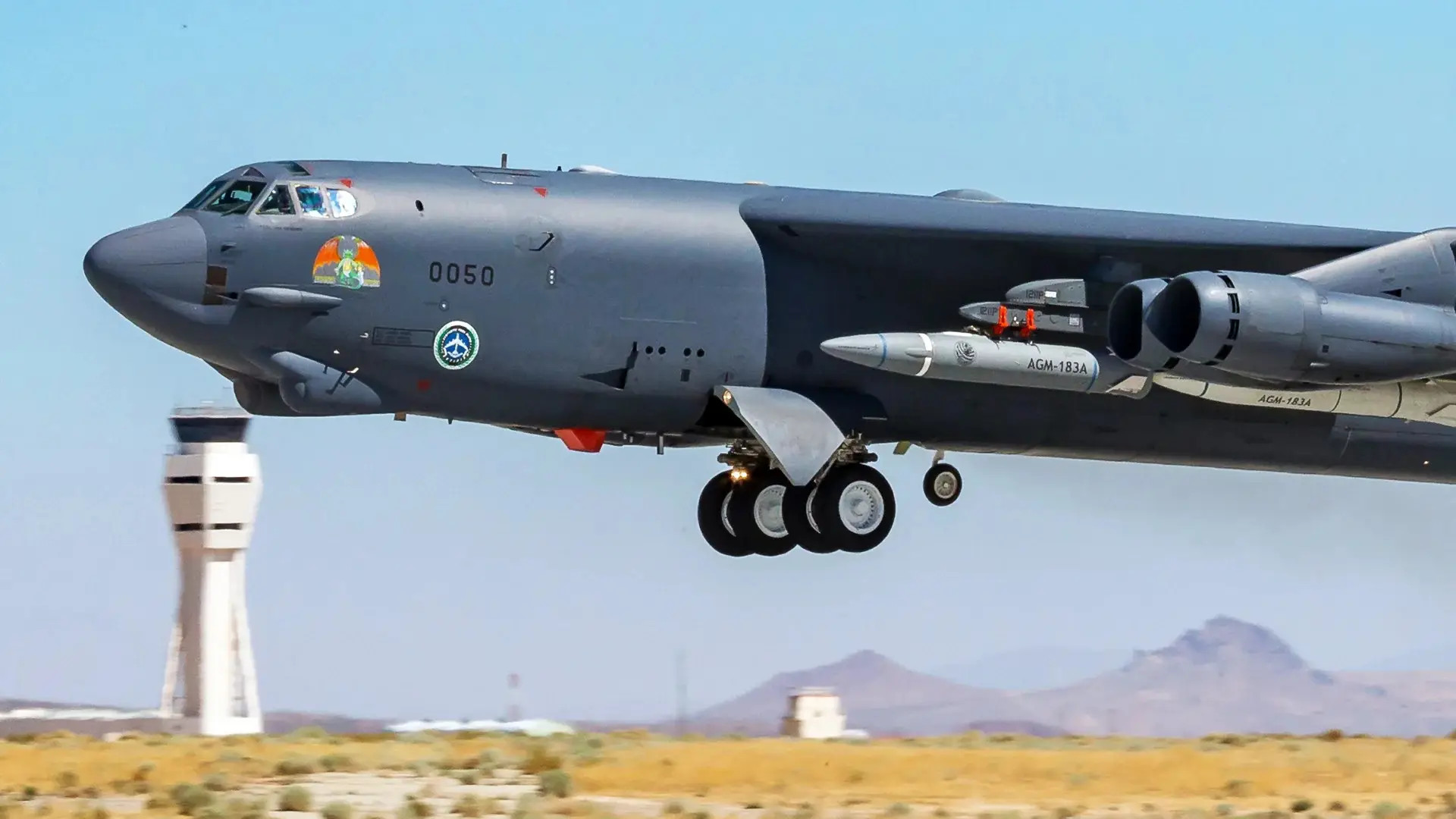The Air Force has confirmed it recently conducted another launch of an AGM-183 Air-launched Rapid Response Weapon hypersonic missile, or ARRW, but has not said whether the test met all of its objectives. The service, which is no longer planning to field ARRW, did say that this latest round of live-fire testing provided data that will be useful for other hypersonic programs, including the now-in-development Hypersonic Attack Cruise Missile, or HACM. The launch also provided an opportunity to validate new tools for testing and evaluating hypersonic systems.
A spokesperson for the Air Force’s 96th Test Wing at Eglin Air Force Base in Florida confirmed to The War Zone that a B-52H bomber had launched the ARRW “off the coast of southern California” on August 19.

“This test launched a full prototype operational hypersonic missile and focused on the ARRW’s end-to-end performance,” the spokesperson added in their statement. “The Air Force gained valuable new insights into the capabilities of this new, cutting-edge technology.”
“While we won’t discuss specific test objectives, this test acquired valuable, unique data and was intended to further a range of programs such as ARRW and HACM,” the statement continued. “We also validated and improved our test and evaluation capabilities for continued development of advanced hypersonic systems.”
The AGM-183 consists primarily of a rocket booster and an unpowered hypersonic boost-glide vehicle contained inside the missile’s nose cone. The booster is used to get the boost-glide vehicle to a desired speed and altitude, at which point it is released from the rest of the weapon.

The unpowered wedge-shaped boost-glide vehicle then proceeds along a relatively shallow, atmospheric flight path at hypersonic speeds, defined as anything above Mach 5, to its target. The vehicle is designed to have a relatively high degree of maneuverability, allowing it to make erratic course changes along the way. The combination of speed, maneuverability, and shallow atmospheric flight trajectory all make weapons of this type particularly hard for opponents to try to intercept or otherwise react to, including simply trying to relocate assets out of the target area or take cover.

The August 19 launch is the eighth known live-fire test of ARRW and the third one intended to involve a complete end-to-end flight. The first known end-to-end test, which occurred on December 9, 2022, was successful. The second, which took place on March 13 of this year, ended in failure.
Of the five initial, more limited AGM-183 live-fire tests, which were conducted between April 2021 and May 2022, the Air Force has categorized two as failures, one as a partial success, and two as full successes. The service also previously conducted a number of captive carry flight tests, where ARRW test articles were not actually launched from the B-52H bombers onto which they were loaded.

Altogether, AGM-183’s flight test record is checkered, at best. This was a major contributing factor in the Air Force’s decision to cancel the project, which was announced earlier this year as part of its 2024 Fiscal Year budget proposal. Though the service had long-touted ARRW as being set to be its first operational air-launched hypersonic weapon and a critical additional to its arsenal, especially in the context of a potential future conflict against China, it has now shifted its focus to the air-breathing HACM.
The Air Force announced in 2022 that it had selected Raytheon as the prime contractor to design and build the HACM. Lockheed Martin is the prime contractor for ARRW and had previously announced the establishment a new facility that would be focused on the production of these missiles.

However, the Air Force has also stressed its intention to finish the already scheduled ARRW testing campaign to help support other endeavors.
“There is inherent benefit to completing the All-Up Round (AUR) Test Flights (ATFs) to garner the learning and test data that will help inform future hypersonic programs,” Andrew Hunter, the Assistant Secretary of the Air Force for Acquisition, Technology, and Logistics, explained to members of Congress in written testimony submitted for a hearing March.
It was in that same written testimony that it first emerged that the Air Force did not “currently intend to pursue follow-on procurement” of ARRW after the end of the remaining scheduled flight tests.
The Air Force has not elaborated on what kinds of data from ARRW tests might be relevant to HACM, which is a very different type of weapon. However, there are various areas where information gleaned from testing the former could be useful to the latter. For one, anything flying at extremely high speeds is subjected to a host of physical and thermal stresses that require components to be made of specialized materials and constructed in particular ways. ARRW and HACM may have certain degrees of commonality, at least in broad strokes, when it comes to their guidance, datalinks, and other key systems.

The statement The War Zone received today about the latest ARRW test also doesn’t provide any more details about the “test and evaluation capabilities” that were validated. However, the Air Force has talked at length publicly in the past about the need for new and expanded testing infrastructure to support hypersonic programs. This has included the SkyRange project, which is turning retired RQ-4 Global Hawks drones into aerial test support assets, as you can read more about here.
The Air Force and other elements of the U.S. military have various sea and land-based testing capabilities at their disposal, as well, many of which are also being expanded or otherwise modernized to support hypersonic developments.
The speeds and distances involved in hypersonic flight testing present distinct challenges and requires a significant number of assets prepositioned positioned across broad areas to be able to collect different types of data at various points.

Whatever contributions the AGM-183 program is still making to the rest of the U.S. military’s hypersonic testing ecosystem, and projects within it like HACM, they are likely to soon come to an end. As of March, the Air Force said it had two more ARRW flight tests left on the schedule.
So, unless something has changed, after this past weekend’s test, the Air Force should only have one ARRW left to fire.
Thomas Newdick contributed to this story.
Contact the author: joe@thedrive.com
